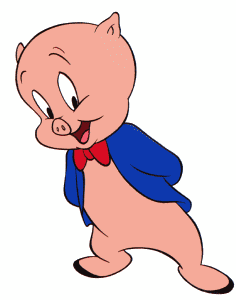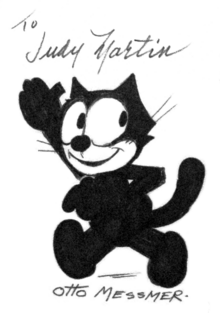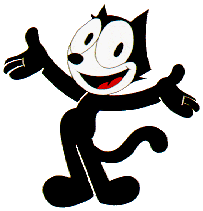In recent years, as a graphic designer, I have coined a new term:
The EMPTY GESTURES of Graphic Design.
I take the term from this rather zany scenee from an episode of "According to Jim".
I refer to my colleague and "Social Behaviors" expert: Jim Belushi.
-
“You know what? Cheryl has a point.
I'll tell you what; You take the rest of the day off we'll do everything else!”

“Are you outta your freakin mind?!
We're gonna cook dinner?”

“Just relax, ok?
Nobody's gonna do any cooking, here.
The only thing we're gonna be making...”
“...Is the “Empty Gesture.”
The only thing we're gonna be making...”
“...Is the “Empty Gesture.”
“An Emtpy Gesture?”
Sherril is such a control freak about the holiday dinners.
She'll be down here before you know it, to take over everything.
But since we made the offer... ”
“Aaah!!!
We get the credit but we ain't got to do the work!”
We get the credit but we ain't got to do the work!”
“Ah, wait you guys, you know,
I don't feel right about this.”
I don't feel right about this.”
“Fine.
You pull the guts out of the turkey.”
You pull the guts out of the turkey.”
“I'm over it.”
Ah, Jim, Jim, Jim...
In this heart warming scene, a reference is made to the act of making a gesture to someone in order to gain favor, all the while, knowing full well there is nothing substantial to it. How chivalrous.
In this heart warming scene, a reference is made to the act of making a gesture to someone in order to gain favor, all the while, knowing full well there is nothing substantial to it. How chivalrous.
While in real life this would probably seem extremely cruel and selfish (or the trademark of a politician), it does sum up humanity quite well. People love "IMAGE.”
We see something shiny, we go “Oooh!” We see someone wearing glasses we assume they're smart. Facial hair is mature, leather is dynamic, overcoats are powerfull, sunglasses are cool, a nice looking car means a respectable owner, the color red is exiting and fun, and he who fails to come his hair can be the next Justin Bieber.
It's the little things, which may have no bearing on the subject at all, that can project some of the most powerfull assumptions over it. It seems we are ready and willing to let the feel of something dictate how we respond to it. As a result the world of graphic design has it's own form of "Empty Gestures". The rule basically goes like this: People Like STUFF
Which looks more professional to you?
THIS?
OR THIS?
(YUP GOT MY DISNEY FIX IN THERE.)
I'd venture to say that 90% of all design proffesors would tell you to pucker up and "K.I.S.S." (Keep It Simple Stupid) It's a pretty commonly understood fact. "Simplicity makes for good design".
AND YET,
We still get exited as consumers when we see a bunch of flashy stuff.
So when I design something for the purpose of corporate identity: packages, posters, book covers, business cards ect, I look for the extra signals that I can use to tell the passerby that it's worth their attention. Mind you, simplicity is important in good design but details grab attention.
Website addresses,
Personal info,
Sub titles,
Special thanks,
Author pictures,
Watermarks,
Publishing dates
Etc.
Every little add on I can think of that will turn this generic blend of imagery and test into an apparently "OFFICIAL" packadge direct from the multi million dollar company. (even if the company actualy consists of three college droppouts working out of their basement.) These Empy Gestures are not necessary to the business side of things. they don't make the business any more proffessional or the product any better. Yet the addition of these elements, gives the sense as if they were.
I have actually told clients before:
"Even if you don't actually NEED one, go ahead and make up a fake CPU barcode and stick it on the back your packadge."
It's like if you were to hire a bodyguard.
Who would you trust?
Who would you trust?
Honestly, the guy on the left probably knows about 18 different ways to take you out with a cotton swab. But we're not looking at that fact are we? We're looking over on the right at the bullet proof vest, the twin holsters, the knee-pads, fingerless gloves, and multiple layes of straps and buckles. They guy on the right may very well be a magazene model who's never been in a fight before. Nevertheless, respect goes to the one who has better presentation.
In the same way all the little things you can stick into a design, add a stigma of confidence that “This person knows what they're doing.”
NOW
Is this a lie? Not really, because we don't know that the business or product ISN”T good. Heck "3 college droppouts working out of their basement" turned out to be these guys.
"But more importantly, I'd say that the one who THINKS to add such detail, to hire a good designer in the first place, to spend the time and money on such discrepancies; is most likely to carry that same thought and effort into the rest of what they do.
I'm sure you've all heard the expression: “You can put a tuxedo on a pig but it's still a pig.”
Well actually it's a pig wearing a tuxedo, now.Why anyone would want to put a tuxedo on a pig, I don't really know. I guess the pig had a wedding to go to. Maybe it was an anthropomorphic pig. Well as long as he brings it back clean.
THE POINT IS:
Sure rainbow colored sprinkles won't make bad tasting ice cream taste good, but if the ice cream is already good, it might entice you to come in for a taste.
So remember designers, make sure to pay attention to the cherries and whip cream.
And clients? Make sure you find a graphic designer who's willing to give you an “EMPTY GESTURE.”
… Wait that came out wrong...























































